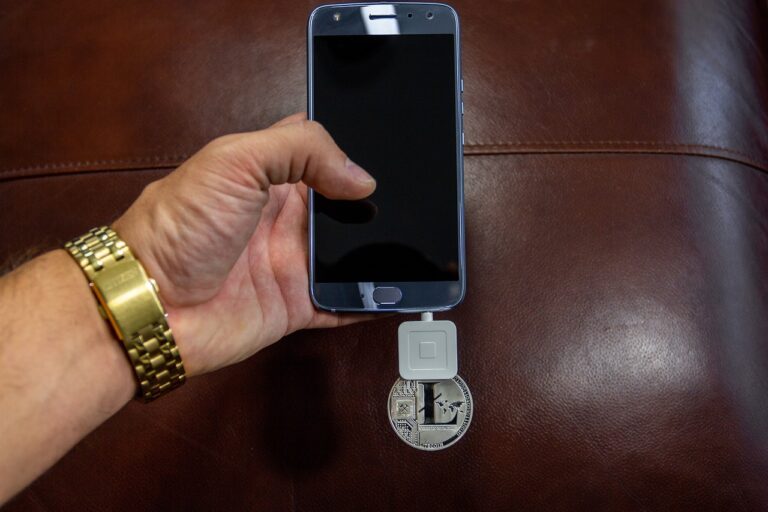Innovations in Payment Technologies: From Contactless to Cryptocurrency
The world of payment technologies has seen rapid advancements in recent years, with new innovations shaping the way we exchange money and conduct transactions. From contactless payments to cryptocurrency, the landscape of payment technologies is constantly evolving. In this article, we will explore the latest developments in payment technologies, including the rise of contactless payments, the growth of mobile wallets, and the impact of cryptocurrencies on the financial industry.
Contactless Payments
Contactless payments have become increasingly popular in recent years, offering a convenient and secure way to make transactions without the need for physical contact. By simply tapping a card or mobile device on a contactless terminal, consumers can complete transactions quickly and efficiently. Contactless payments have gained widespread acceptance across various industries, including retail, transportation, and hospitality. The technology behind contactless payments uses radio frequency identification (RFID) or near field communication (NFC) to enable communication between the payment device and the terminal.
Mobile Wallets
Mobile wallets have also emerged as a popular payment option, allowing consumers to store their payment information securely on their smartphones. Mobile wallet apps enable users to make payments, send money, and manage their finances from their mobile devices. With the increasing adoption of mobile wallets, retailers and financial institutions are investing in secure and user-friendly mobile payment solutions. Mobile wallets offer a convenient and seamless payment experience, allowing users to make transactions with just a few taps on their smartphones.
Cryptocurrency
Cryptocurrency has disrupted the traditional financial system, offering a decentralized and secure alternative to fiat currencies. Cryptocurrencies such as Bitcoin, Ethereum, and Litecoin are digital assets that use cryptography to secure transactions and control the creation of new units. Blockchain technology underpins cryptocurrencies, providing a transparent and immutable record of transactions. The growing popularity of cryptocurrencies has led to the development of innovative payment solutions, such as peer-to-peer transactions, smart contracts, and decentralized finance (DeFi) applications.
Biometric Payment Technologies
Biometric payment technologies are also making waves in the payments industry, offering a secure and convenient way to authenticate transactions using biometric data. Biometric authentication methods, such as fingerprint scanning, facial recognition, and iris scanning, are increasingly being integrated into payment devices and mobile apps. By leveraging biometric data for authentication, businesses can enhance the security of payment transactions and reduce the risk of fraud. Biometric payment technologies are poised to revolutionize the payments industry by providing a more secure and user-friendly payment experience.
Artificial Intelligence and Machine Learning
Artificial intelligence (AI) and machine learning (ML) are transforming the payments landscape by enabling businesses to streamline processes, detect fraud, and personalize the customer experience. AI-powered payment solutions leverage data analytics and predictive algorithms to identify patterns, detect anomalies, and optimize payment processes. Machine learning algorithms can analyze vast amounts of data in real-time to identify fraudulent activities and prevent unauthorized transactions. By harnessing the power of AI and ML, businesses can improve efficiency, reduce costs, and enhance the overall payment experience for customers.
Internet of Things (IoT) Payments
The Internet of Things (IoT) is revolutionizing the way we interact with connected devices, and payments are no exception. IoT payments enable transactions between connected devices, such as smart appliances, wearables, and vehicles. By embedding payment capabilities into IoT devices, businesses can create new opportunities for frictionless transactions and seamless user experiences. IoT payments are poised to transform various industries, including healthcare, retail, and transportation, by enabling secure and convenient payment options for consumers.
Conclusion
Innovations in payment technologies are reshaping the way we exchange money and conduct transactions, offering new opportunities for businesses and consumers alike. From contactless payments to cryptocurrency, the evolution of payment technologies is driving greater convenience, security, and efficiency in the financial industry. As technology continues to advance, we can expect to see further developments in payment technologies that enhance the overall payment experience for users.
FAQs
Q: What are contactless payments?
A: Contactless payments are a fast, easy, and secure way to make transactions without the need for physical contact. By tapping a card or mobile device on a contactless terminal, consumers can complete transactions quickly and efficiently.
Q: What is a mobile wallet?
A: A mobile wallet is a digital wallet that allows users to store payment information securely on their smartphones. Mobile wallet apps enable users to make payments, send money, and manage their finances from their mobile devices.
Q: What is cryptocurrency?
A: Cryptocurrency is a digital asset that uses cryptography to secure transactions and control the creation of new units. Cryptocurrencies such as Bitcoin, Ethereum, and Litecoin offer a decentralized and secure alternative to traditional fiat currencies.
Q: How do biometric payment technologies work?
A: Biometric payment technologies use biometric data, such as fingerprint scanning or facial recognition, to authenticate transactions securely. By leveraging biometric data for authentication, businesses can enhance the security of payment transactions.
Q: What is the role of artificial intelligence in payment technologies?
A: Artificial intelligence enables businesses to streamline processes, detect fraud, and personalize the customer experience. AI-powered payment solutions leverage data analytics and predictive algorithms to identify patterns and optimize payment processes.
Q: How do IoT payments work?
A: IoT payments enable transactions between connected devices, such as smart appliances and wearables. By embedding payment capabilities into IoT devices, businesses can create new opportunities for frictionless transactions and seamless user experiences.







